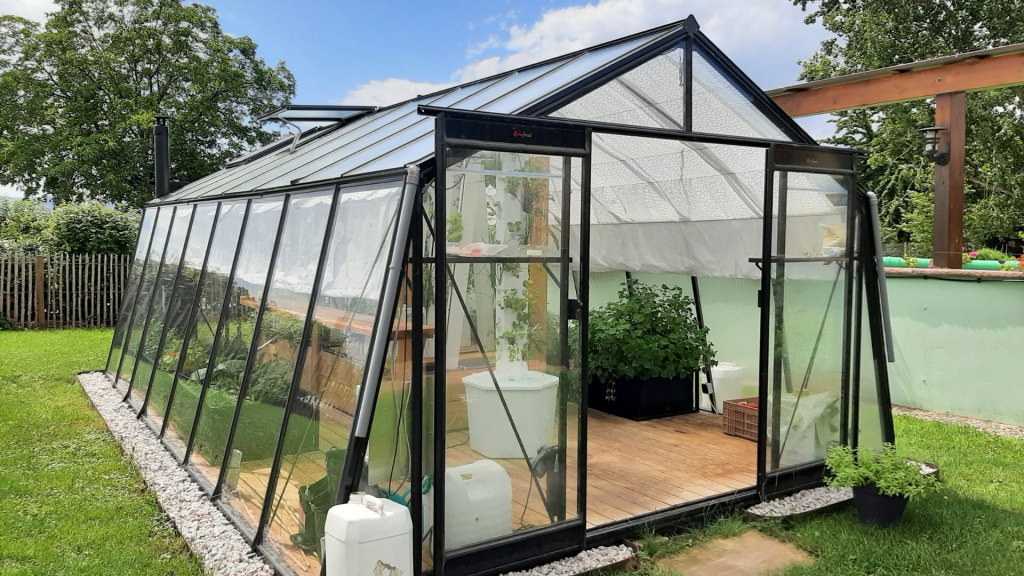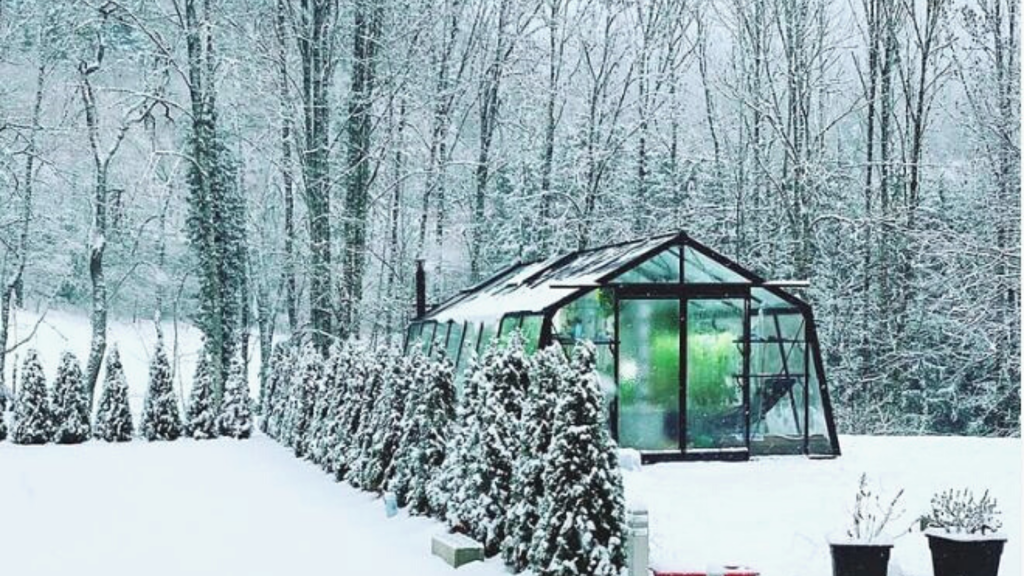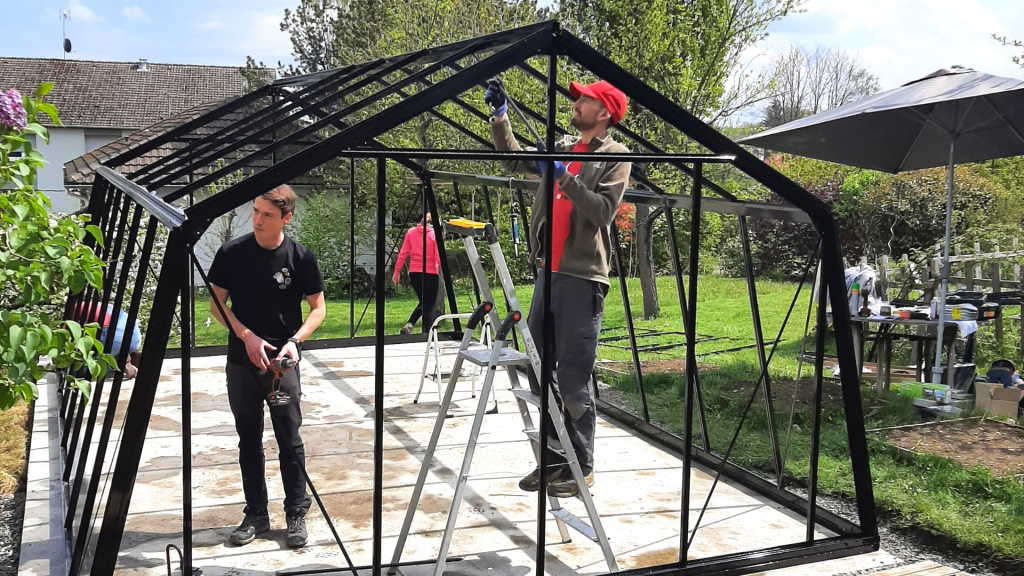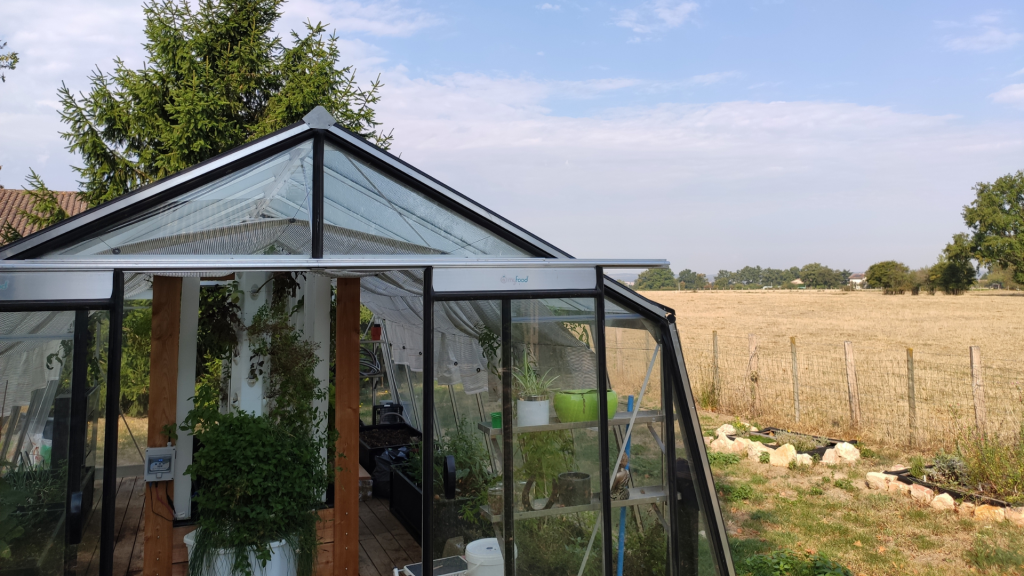The planet is on your mind, and you’re wondering how to improve your ecological impact and eat better? We have the solution: invest in an innovative greenhouse. This is not a decision you take lightly. It’s a long-term project. But we are here to answer your questions. We’ll help you sort it all out with the 10 questions you should ask yourself before taking the plunge (we’re not talking about aquaponics tanks, of course)

Anyone can start growing in a connected greenhouse. Whether you have knowledge or not, the included agronomic support allows you to spend a minimum of time. We estimate that weekly maintenance takes one to two hours per week, during the “cruising” period (excluding the major biannual clean-up).
In concrete terms, regular maintenance consists of :
In return, what you won’t do :
And finally, you will find yourself happily walking through your greenhouse every day. You will admire this incredible nature that makes your plants grow
Our greenhouses have been around for several decades and are designed to withstand the vagaries of the weather. Made of wood, aluminium and Securit glass as strong as a windscreen, our greenhouses can withstand winds of up to 140km and large hailstones. Following the hailstorms of June-July 2021 and 2022, no breakage was reported. The same cannot be said of the adjoining vegetable gardens, which were unfortunately ravaged by hailstones the size of a palm.
As for the snow… no problem. From the French Haut Doubs to Quebec, our users continue to grow under glass in the dead of winter and under metres of snow. If necessary, you can install a pellet stove to keep the greenhouse frost-free and / or heating elements in the tanks to ensure the comfort of the fish (easier than making them put on a down jacket isn’t it!)

In summer, of course, everything is easier. Tomatoes, aubergines, cucumbers, melons… But what do we eat in winter? Seasonal fruit and vegetables of course.
Potatoes, leeks, lettuce, spinach, cabbage, chard, celery, mache, fennel, mustard, shallots…
We also provide recipes to make these vegetables even more appetizing to your children (or the one that still lives in you).
To guarantee your harvest in June as well as in December, we also offer you adaptations that vary from the useful to the indispensable, depending on your region: pellet stove (to keep the greenhouse frost-free, not to grow tomatoes in December!), insulating plates for the northern walls, horticultural LED lighting.
It depends on your orientation and your region. Generally speaking, we advise you to place your glass greenhouse in the south, where it will benefit from the maximum number of hours of sunlight, especially in winter. The greenhouse should therefore be positioned in a well-lit, accessible area that is not subject to flooding (upstream of any water run-off).
A 220V single-phase power supply should be provided at the greenhouse location, with the sheathing, wiring or trenching specifically designed for outdoor use.
Water must be available in the greenhouse installation area for filling the basins. It is a good idea to use as much rainwater as possible in the operation of the greenhouse (we offer water collectors as an option).
Finally, you need to choose a site with level ground, or level it out to install the greenhouse.
If you need to make a more detailed decision, don’t worry, our team is at your disposal to define the exact location of the greenhouse in your space (garden, terrace, flat roof or even parking space).
Us, of course… or you. It’s up to you.
Depending on your desire, your time, your DIY skills… Overall, we offer an installation service by our fitters, which can take from 1 to 3 days depending on the size of the greenhouse chosen and the level of equipment.
Since the first containment, we have also provided assembly instructions and, above all, many video tutorials to enable you to assemble the greenhouse yourself. And you know what? It always works out well. It may take you a little longer than our professional installers, but you’ll be proud to have assembled it!
Self-installation or installation by our fitters… the choice is yours.

Nothing happens. Well, everything! Nothing for you to do, because the greenhouse does everything by itself and continues to run with fish and worms.
In the summer, it might be a good idea to ask a friendly neighbour to come and check the water level and refill the tanks and ponds a little, once a week or so. Hopefully they won’t harvest for you. But given the rate at which the plants grow, it’s not guaranteed that this kind neighbour will resist… You have been warned.
In winter, frankly, nothing to do. You can leave for 2-3 weeks and sleep soundly. When you come back, you can harvest everything that has grown and simply carry out the usual maintenance.
The greenhouse is designed with a ventilation and airing system to optimise temperature and humidity. Yes, it is hot in the summer, but for tomatoes to grow, it is better. And it’s still not as hot as in the open field, in full sun. The bioclimatic structure, the cathedral glass roof, the automatic openings, the ventilation, the professional shade cloth and the misting option are all there to prevent the plants from getting overheated. And the continuous watering ensures that your fruit and vegetables never die of thirst.
All this while saving 90% of water compared to a vegetable garden.

Yes, yes, and yes.
That’s why the Myfood project was launched. More than half of our users do not have a green thumb or have never gardened. All our users have benefited and still benefit from our agronomic and community support. What does this mean? It means that each Pioneer can exchange information with our in-house agronomists and other Pioneers on a daily basis via a dedicated social network. A hesitation, a question, a doubt… just ask and a more experienced person will guide you. With more than 800 users in 2022, there is always someone available and passionate to share an answer, a photo example, a recipe to inspire you
For a City greenhouse of less than 5m², no need. For our 22m² size, it is necessary. There is absolutely no need to apply for planning permission. Our teams take care of this formality for you and ensure that your installation complies with your town planning constraints.
Absolutely.
Broadly speaking, a greenhouse pays for itself in five to seven years. Given the rising inflation on fruit and vegetables and the increase in energy prices, this time should become even shorter, especially if you like fruit and vegetables that taste good and are grown without pesticides.
If you want to go into detail and calculate for yourself, find our dedicated article here:
It is unlikely that an investment in a car, a swimming pool, a veranda… will pay for itself so quickly.
So when will you start growing vegetables directly on your land?